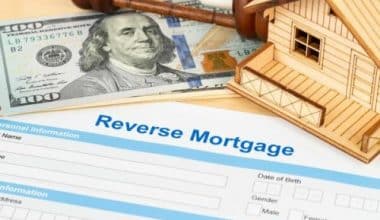Whether you have unforeseen bills, have recently lost your job, or require additional funds for an impending vacation or project, you may be thinking if borrowing money is a viable option. Fortunately, there are a multitude of lenders and financial products available to satisfy everyone’s individual borrowing needs.
We’ll walk you through where you can borrow money as well as the many possibilities, such as personal loans, home equity loans, and 0% introductory rate credit cards.
How To Borrow Money
The ideal time to borrow money is determined mostly by the purpose of the funds, the type of loan, and whether it is secured or unsecured. There are a few other variables to consider while preparing to borrow money. It might be a good idea to borrow money if:
- You have the financial means to make the monthly installments.
- You have a budget in place to manage your funds in the future.
- Interest rates are quite low.
- Your credit score is at least 670, while consumers with lower scores may still be eligible to borrow.
- You are willing to use your home or other assets as collateral.
Cheapest Ways To Borrow Money
Borrowing always has a cost, but some types of loans are more reasonable than others, particularly if you have strong or excellent credit (a score of 690 or higher).
Here are your top options:
#1. Personal loan from a bank or credit union
Personal loans are often offered at the lowest annual percentage rates, or total cost to borrow, by banks or credit unions. Loan amounts range from a few hundred dollars to $50,000 or more.
Existing customers may be eligible for an extra APR reduction from some institutions. A bank may also provide benefits such as flexible payment alternatives to help you manage loan repayment.
Most banks allow you to pre-qualify to preview the loan’s rate and term before submitting a formal application. Nevertheless, if you don’t have good credit, it’s difficult to get authorized by a bank.
Credit unions may offer lower rates than banks, particularly for persons with poor credit (a score below 630).
Instead of focusing solely on your creditworthiness, loan officers may analyze your whole financial situation. Nevertheless, you must first join a credit union before applying.
#2. Credit card with 0% APR
If you can pay off the balance during the card’s promotional period, a 0% APR credit card can be one of the cheapest methods to borrow money. You usually need strong or exceptional credit to qualify.
Some credit cards have an introductory period of 15 to 21 months during which no interest is charged on transactions.
If you use a 0% APR credit card with a 15-month introductory period to cover an unexpected emergency like a medical bill or car repair, you pay off the balance nine months later. You’ll have to borrow that money at no interest.
#3. Buy Now, Pay Later
“Buy now, pay later” arrangements allow you to purchase products now and pay for them over time, usually without interest or fees. Many merchants provide these payment plans throughout the online checkout process, as well as in-store at times.
Afterpay is a purchase now, pay later the company that does not charge interest but may impose a late fee. Affirm charges interest based on the repayment duration.
Buy now, pay later may be an inexpensive way to borrow money for critical expenses if you can find a zero-interest payment option. Nevertheless, because it is so easy to obtain, it can also lead to overspending.
#4. 401(k) loan
You can borrow money from yourself with retirement loans. A loan, unlike a 401(k) withdrawal, does not require you to pay taxes or penalties.
They also have some of the lowest rates accessible, even if your credit score is low. A 401(k) loan’s interest rate is normally equal to the prime rate — the benchmark used by banks to calculate rates on consumer lending products — plus one or two percentage points. In addition, the interest earned is returned to your retirement account.
Another significant benefit is that if you miss a payment, your credit score will not suffer because defaulted 401(k) loans are not reported to credit bureaus.
What are the drawbacks of a 401(k) loan? You borrow from your future self, which reduces your retirement nest egg and its growth in a tax-advantaged account.
#5. Personal credit line
Several banks and credit unions provide personal lines of credit, which function as a cross between a loan and a credit card. Like a loan, a lender must approve your application based on your credit history, income, and previous debts. But, if accepted, you draw only what you need and pay interest solely on the amount you spend, much like a credit card.
This can be good for borrowers who are unsure how much they need to borrow. Borrowers with good or exceptional credit are more likely to acquire the greatest rates.
Fast Ways to Borrow Money
Generally speaking, the easier it is to obtain money, the riskier or more expensive it is. Having stated that here are your best options:
#1. A personal loan from an online lender
Compared to traditional lenders such as banks or credit unions, online lenders offer convenience and speed due to their totally online application and funding procedure. In contrast, some banks require new customers to visit a branch to finish the process.
To get the best APR, which can be influenced by factors such as credit score and income, you should pre-qualify and compare lenders. During pre-qualification, online lenders perform a soft credit check, allowing you to shop around without affecting your credit.
A wider range of consumers is served by online lenders. Individuals with fair to poor credit are more likely to obtain a personal loan from an online lender than from a bank.
#2. Loan apps
If your need isn’t urgent, cash advance apps offer minor advances on your salary, often instantaneously — but you may have to pay a premium for faster service. Typical funding periods range from one to three days.
Most cash advance applications impose a monthly fee or an optional tip. Earnin does not charge interest on advances ranging from $100 to $750, but it does collect a tip of up to $14 for each advance.
#3. Credit card cash advance
You may also be able to obtain cash advances using your credit card. Consider using your credit card to “purchase” cash rather than goods or services.
Cash advances are often limited to a few hundred dollars, but they are simple and quick to obtain. If your credit card has a PIN, simply withdraw funds from an ATM. If you don’t have a PIN, take your card and ID to a bank that allows advances via the payment network of your card, such as Mastercard or Visa.
Although it is a quick way to have money in your hands, it is expensive. You will very certainly be charged a combination of cash advance fees, ATM or bank fees, and interest rates that are higher than the rate charged on purchases, and the charges will mount quickly.
#4. Loan from family or friends
If you’re in a tight spot, you might be able to borrow money from someone in your network. You will avoid the often lengthy official application and approval process necessary from other sorts of lenders. This circumstance is great for anyone who needs money quickly or is concerned about their ability to qualify for a loan with their current credit score.
So, proceed with caution when considering a family loan. Loans between friends and family might cause problems. As a result, write out mutually agreed-upon agreements and get them notarized.
#5. Pawnshop Loan
Like a secured loan from a bank, a pawnshop loan requires you to put up collateral. Consider jewels, antiques, or electronics. When you bring the item in, the pawnshop evaluates its worth, condition, and resale prospects before making you an offer.
If you accept the amount, you will receive cash and a pawn ticket. You may reclaim your item upon refund. If you do not repay by the deadline — usually 30 days — the pawnshop keeps it.
A pawnshop loan does not require a credit check and can be a quick method to borrow money without affecting your credit score. But, in addition to the interest rate imposed on the loan, pawnshops levy costs for storage, evaluation, and insurance, which can result in an APR of up to 200%.
Borrowing Alternatives To Avoid
#1. Payday advances
A payday loan is a small, short-term loan that is designed to be paid back with your next paycheck. While funds can be accessed nearly instantaneously, payday lending is extremely expensive and should only be used as a last resort. Loans can cost $15 for every $100 you borrow, for a two-week loan with an APR of 391%.
According to federal Consumer Financial Protection Bureau research, most borrowers wind up paying more in fees than they received in credit, establishing a debt cycle.
#2. Installment loans with high-interest rates
High-interest installment loans are repaid over a few weeks to months and carry interest rates above 36%, the maximum rate that most consumer advocates consider acceptable.
A $1,000 loan with a six-month term and a 60% APR, for example, would cost $182 in interest and require a $197 monthly payment. The interest on the identical loan at a 20% APR would be $59 per month. If at all possible, avoid high-interest installment loans, as high APRs can make repayment difficult.
What Are the Worst Ways to Borrow Money?
Any loan that exploits the borrower or has hidden fees is not the ideal method to borrow. Payday loans are one of the worst methods to borrow money. These loans, which typically need payback by the next payday, feature exorbitant interest rates and hidden costs that sometimes force you to return considerably more than you borrowed.
Is Collateral Required for the Best Ways to Borrow Money?
Some alternatives to borrowing money need collateral, while others do not. There are numerous excellent ways to borrow money, and you can find solutions that meet your requirements even if you lack collateral to back your loan.
Why Is It Critical to Be Careful Where You Borrow Money?
Not every lender is reliable. Each lender should be well-researched. Check their ratings through the Consumer Financial Protection Bureau (CFPB) to discover whether they have a lot of credible complaints against them. Just because a lender appears credible does not imply that they are. You can avoid pitfalls such as excessive variable interest rates and hidden costs by researching lenders before signing any agreements.
What Are the Benefits of Taking Out a Loan?
Borrowing money enables people to purchase large-ticket products such as a home or a car.
Borrowing can also be used to construct a credit history or improve a credit score. Managing debt wisely can make it easier to borrow money in the future.
Returning Borrowed Money
Make a repayment plan as soon as you’ve decided how you’re going to borrow the money. You don’t want a financial setback to turn into long-term or ever-increasing debt.
Not sure where to begin? NerdWallet advises utilizing the 50/30/20 rule to construct a budget because it is an easy-to-follow method that accounts for your essential living costs, debt commitments, and savings.
You may reduce your chances of needing to borrow by carefully managing your money and saving for an emergency fund.
Conclusion
There are numerous ways to borrow money, and it is critical to weigh your options. Evaluate your motive for borrowing money and shop around with several lenders and loan kinds to compare what they have to offer.
Before you accept any loan, take the time to thoroughly read all of its terms. Be careful that loans may contain hidden fees or unclear terms, and it is your responsibility to comprehend what you are signing up for.
- $2000 LOANS: What to Know About Getting a $2000 Loan With No Credit Check
- HOW DO BUSINESS LOANS WORK: What It Is and How It Works
- BORROWING FROM 401K: All You Need To Know
- COMMERCIAL LOANS: Understanding Commercial Loan, Types & Rates
- Borrowing From Life Insurance Policy: How It Works






